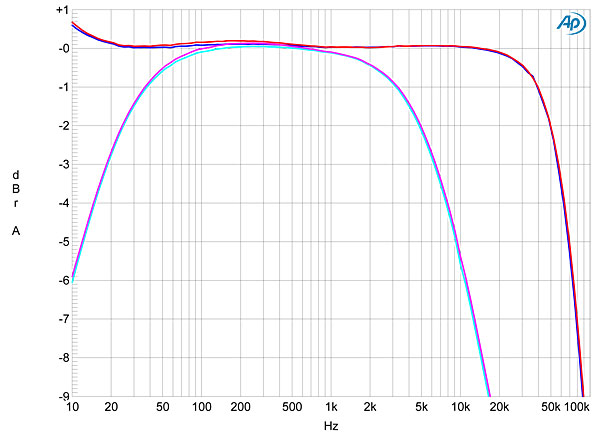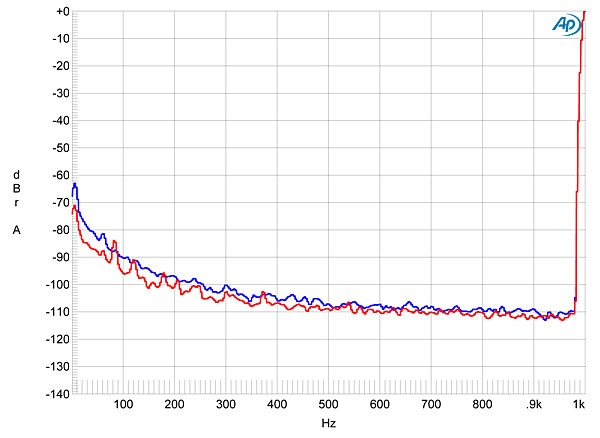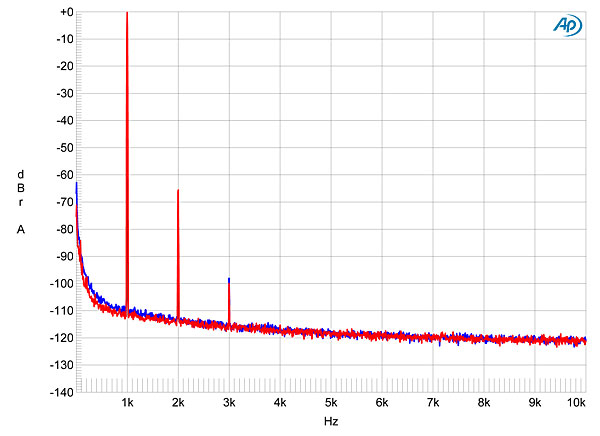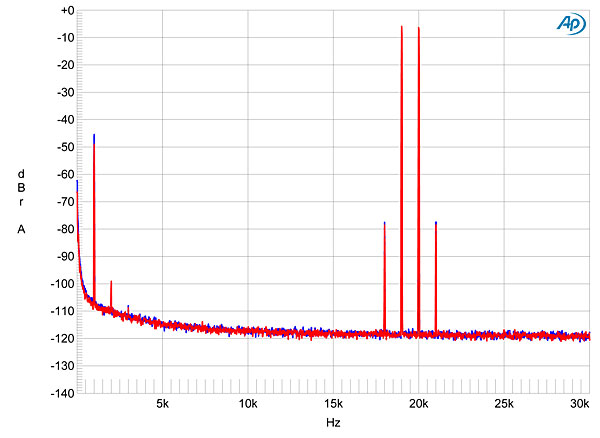| Columns Retired Columns & Blogs |
I have been keeping my eye on this baby and figured if it went unremarked upon, I might find one on the cheap.
So, Art, thanks for ruining my plan!
It would have worked, too, if not for that meddling reviewer.
;-D
I measured the Luxman EQ-500 phono preamplifier using my Audio Precision SYS2722 system (see www.ap.com, and the January 2008 "As We See It."). As always with phono stages, I experimented with the grounding between the Luxman and the Audio Precision system to get the lowest level of noise.
The output level was the same from the Luxman's balanced and unbalanced output jacks. With the EQ-500 set to MM (moving-magnet), the voltage gain at 1kHz was 36.4dB with the gain set to "36," 38.4dB with it set to "38," and 40.5dB with it set to "40." (A 1mV input signal was indicated as –20dB on the front-panel level meters with them set to Low, –10dB with them set to High.) With the phono inputs set to MC (moving-coil), the gain was 55.9dB (MC High) and 56.5dB (MC Low), but these measured gains were affected by the interaction of the EQ-500's input impedance of 56 ohms (High) and 7 ohms (Low) with the Audio Precision's output impedance of 20 ohms. Correcting for the voltage-divider action gives respective gains of 58.6 and 68.2dB, which are close to the specified gains of 55 and 67dB. With the MM input impedance set to 47k ohms, the measured input impedance varied from 37k ohms at 20Hz to 29k ohms at 20kHz. Set to 100k ohms, it varied from 78 to 55k ohms; set to 30k ohms, it varied from 30 to 24k ohms. (The input capacitance was set to 0pF for all measurements.)
With its Polarity switch set to Normal, the EQ-500 preserved absolute polarity for all input settings from its unbalanced outputs but inverted polarity from its XLR jacks, which appear to be wired with pin 3 hot, the older standard. (The EIA and AES standard is pin 2 hot, pin 3 cold.) The EQ-500's output impedance is specified as 850 ohms; at the balanced outputs I measured 983 ohms at the bottom of the audioband, dropping to 910 ohms in the midrange and above; at the unbalanced outputs, 880 ohms at 20Hz, dropping to 812 ohms at 1kHz and above.
The blue and red traces in fig.1 show the Luxman's RIAA error. The two channels are superbly well matched, and the response closely follows the RIAA curve. The cyan and magenta traces respectively show the response with the High Cut and Low Cut filters switched on. High Cut makes a drastic reduction in the treble response: –6dB at 10kHz. Low Cut gives a more sensible drop in low-bass output, reaching –6dB at 10Hz.

Channel separation (not shown) was good at almost 90dB in both directions below 1kHz, and still 63dB at 20kHz. Fig.2 shows a spectral analysis of the EQ-500's low-frequency noise floor, with the input knob set to MM and the reference level 1V at 1kHz. Almost no power-supply–related spuriae are visible, and the unweighted, wideband signal/noise ratios (ref. 1kHz at 5mV and taken with the inputs shorted to ground) were good, at 59dB in the left channel, 65dB in the right. An A-weighting filter improved these ratios to 77.2 and 78.5dB, respectively. Unlike that of a phono preamplifier with an active MC gain stage, the EQ-500's noise performance was almost the same with its MC settings, due to the use of internal step-up transformers.

With the inputs set to MM, the overload margin at 1kHz was excellent, at 30dB ref. 5mV, but this worsened at the frequency extremes, to 15dB at 20Hz and 12dB at 20kHz. The MC overload margins, ref. 1kHz at 500µV, were similar. Harmonic distortion at normal levels was low, at typically 0.05%. Spectral analysis (fig.3) revealed that the primary harmonic present was the second, at –67dB. This graph was taken into 100k ohms; reducing the load impedance to a punishing 600 ohms increased the level of the second harmonic by almost 20dB—but the Luxman will never be used with so low a load. Intermodulation distortion (fig.4) was a little higher than I would have liked to have seen, the difference product at 1kHz resulting from high-level tones at 19 and 20kHz lying at –47dB (0.4%) in the left channel and –50dB (0.3%) in the right. Higher-order products, however, are much lower in level.


It was a pleasure to measure Luxman's EQ-500 phono preamplifier. Good, solid audio engineering.—John Atkinson

I have been keeping my eye on this baby and figured if it went unremarked upon, I might find one on the cheap.
So, Art, thanks for ruining my plan!
It would have worked, too, if not for that meddling reviewer.
;-D